Published July 29, 2022
10 Standout Artists at the Royal Academy's Summer Show
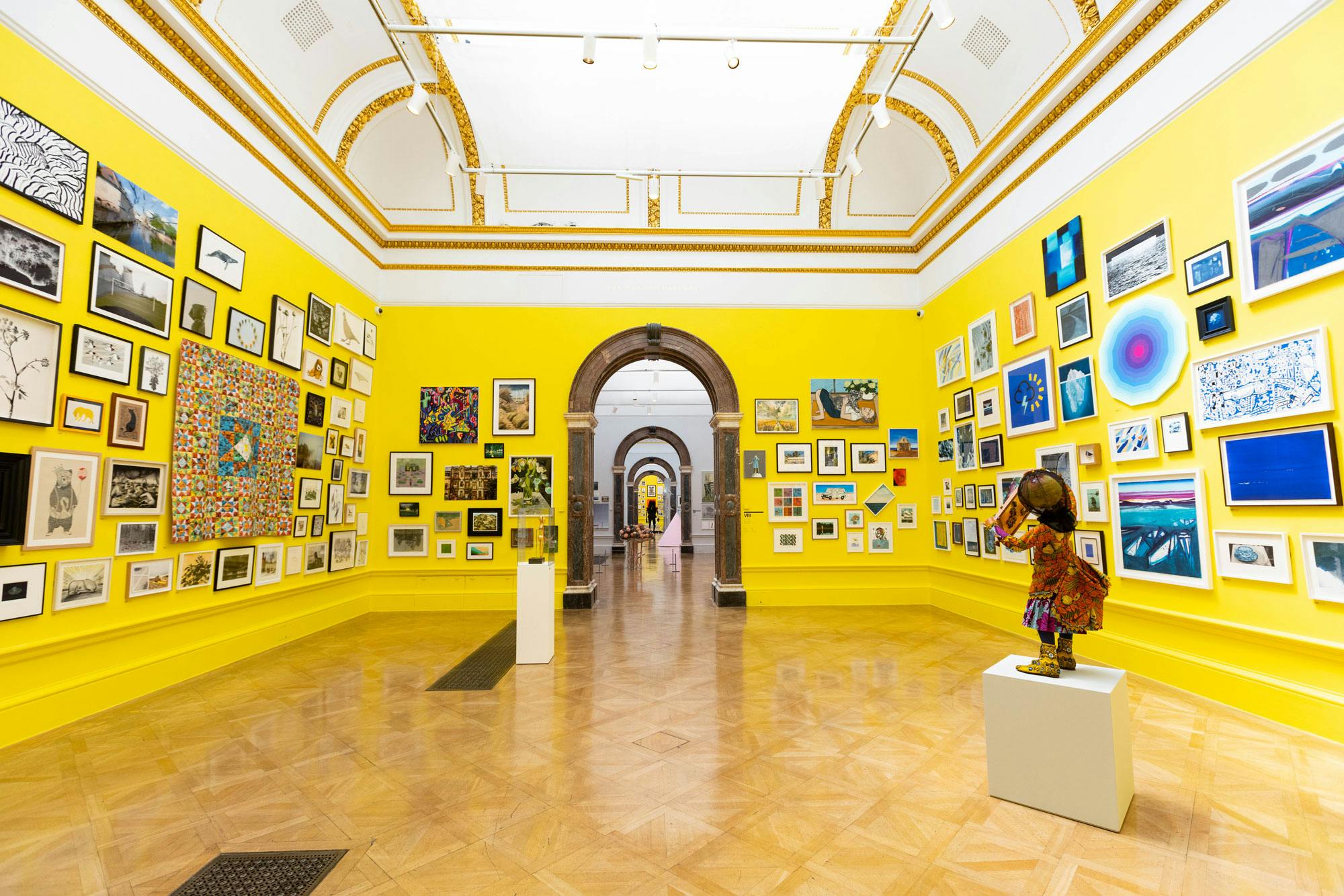
Since its premiere in 1769, the Royal Academy of Art's Summer Exhibition has been an iconic fixture of the British art world. The world’s largest—and arguably most famous—open exhibition attracts record crowds and showcases the work of established artists alongside those of students and the public. The Summer Show is an ever-popular platform for emerging talent: after submissions from across the globe are judged, the final section is installed in Burlington House, one of London’s most historic art venues.
Following two years of logistical and scheduling disruptions caused by the pandemic—which ironically slated the Summer Exhibition for the winter in 2020 and 2021—the 254th edition marks a return to relative normalcy. As in 2019, masks are nowhere in sight and visitors stroll through the show with a glass of prosecco in hand.
This year’s exhibition was coordinated by sculptor Alison Wilding RA, whose selection of the theme “Climate” has invited responses that approach the subject as a means of exploring both crisis as well as our everyday experience with the natural world. The contributions of her fellow Royal Academicians, including Frank Bowling, Michael Armitage, Isaac Julien, Tracey Emin, and Rose Wylie, are hung side-by-side with those of other established artists, such as John Gerrard, and new voices—almost all of which are for sale. Here are 10 emerging artists who stood out this summer:
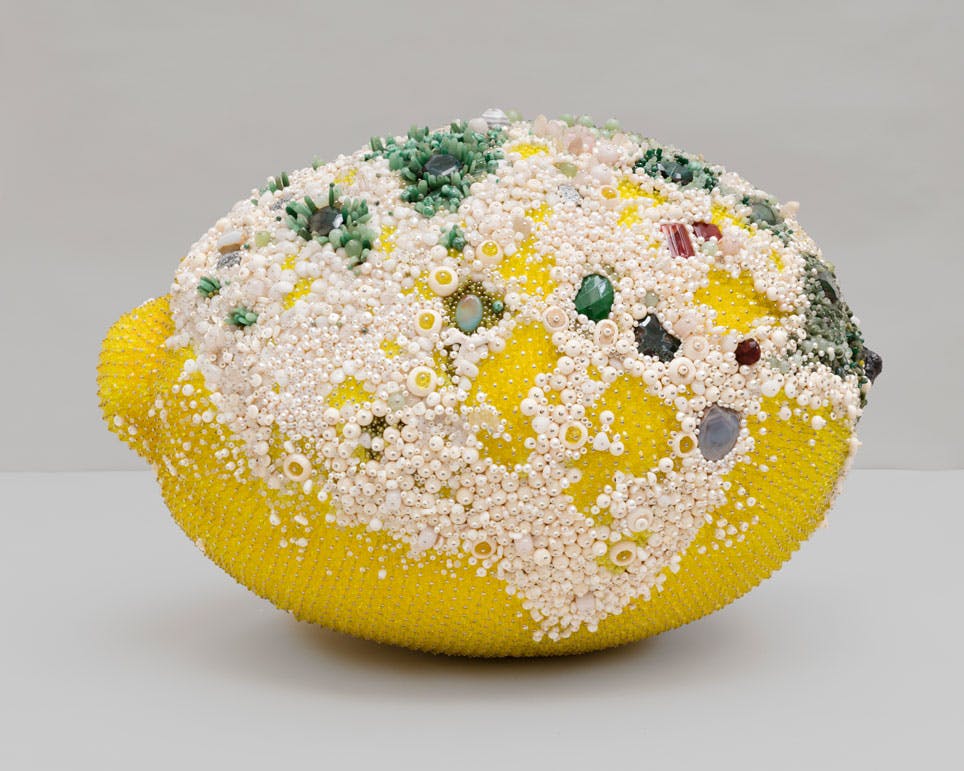
Kathleen Ryan
Building on the momentum from her much-hyped solo shows at François Ghebaly and KARMA as well as her inclusion in last year’s Liverpool Biennial, Kathleen Ryan is having a bit of a moment in London. Her current presentation at Josh Lilley is timed with the RA’s selection of an example from the New York-based artist’s Bad Fruit series as the banner image of the Summer Exhibition. Appearing at first glance as an oversized lemon, the sculpture is soon revealed to be studded with semiprecious stones such as jade and quartz that evoke the inching mold and decomposing skin of rotten fruit. This defamiliarization of everyday food is a negotiation between the natural environment and mechanical production.
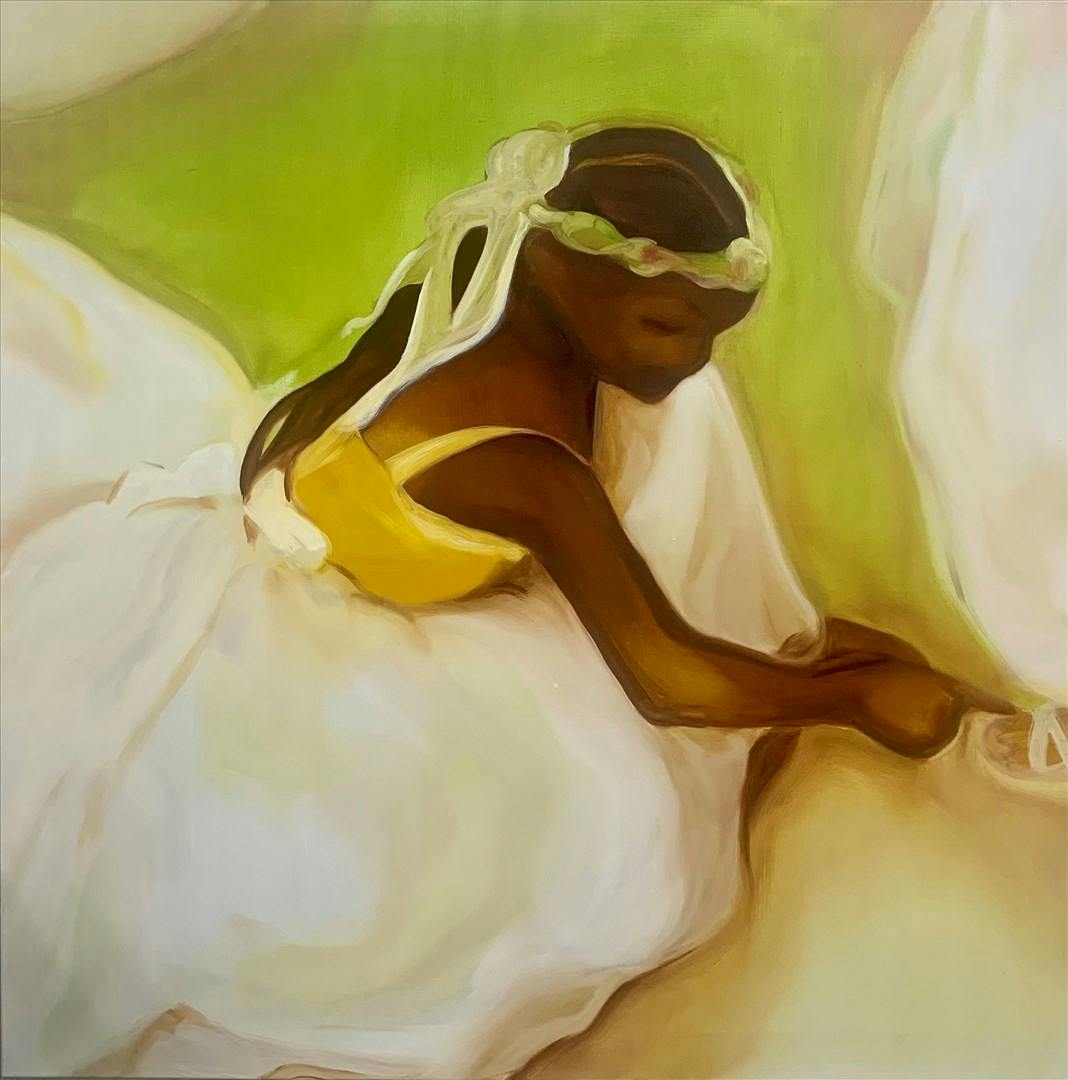
Sikelela Owen
Following her shortlisting for the John Moores Painting Prize and breakout solo show at Taymour Grahne Projects last year, Sikelela Owen is gaining traction for her intimate portrayals of domestic life. Family and friends, typically young Black women and girls, are picked from old photographs to take the place of Degas’s young dancers. The future inheritors of a planet in crisis, these children are motifs of innocence; Owen’s fluid yet restrained handling of paint lends them a striking fragility and sincerity.
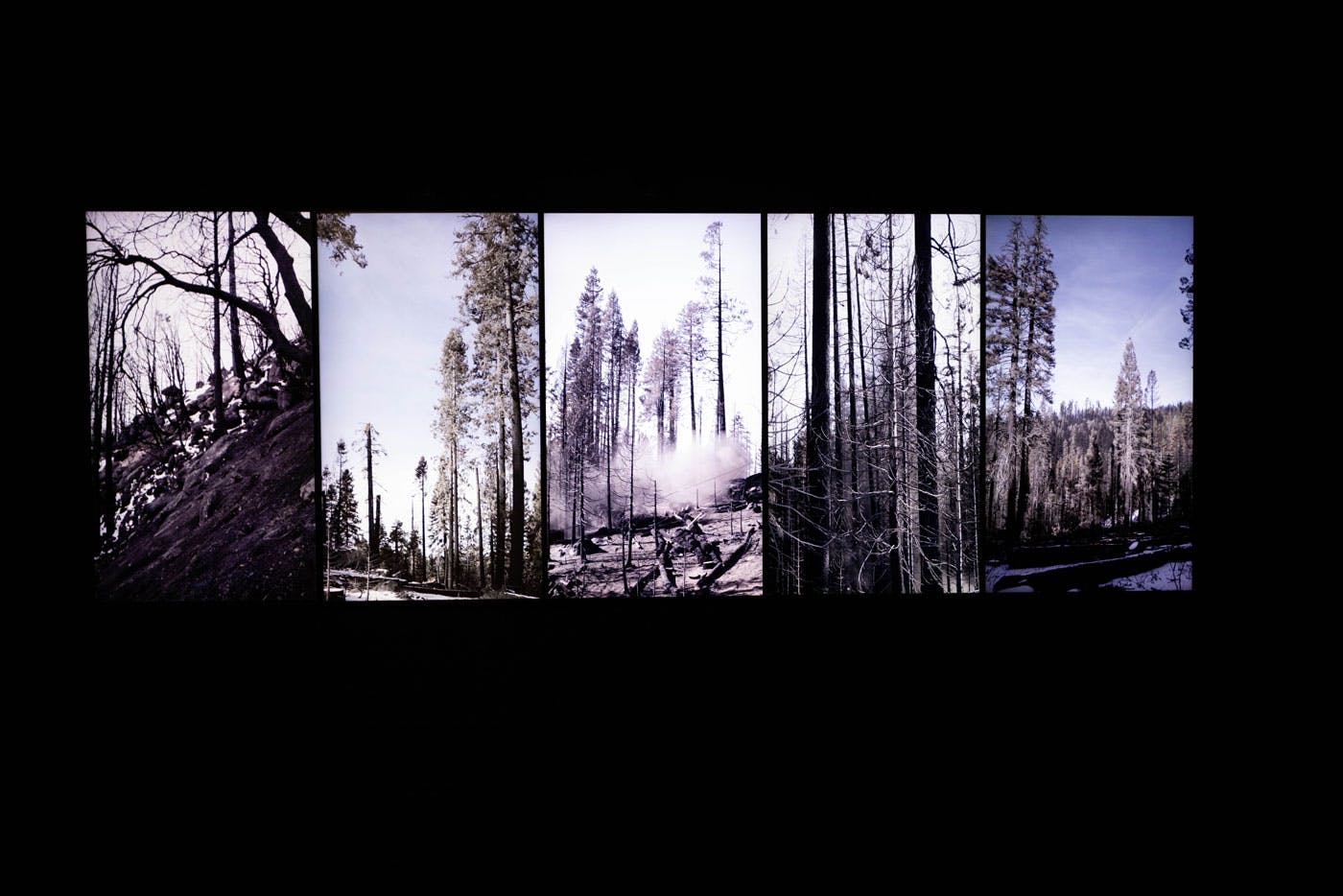
Uta Kögelsberger
The 2022 Charles Wollaston Award, one of the country’s most important prizes which is reserved for the “most distinguished work” in the Summer Exhibition, was presented this year to Uta Kögelsberger for her multi-channel video installation Cull. The work is the anchor of Fire Complex, the London-based artist’s documentation and replanting project which follows the cataclysmic aftermath of the 2020 California wildfires that destroyed 170,000 acres of forest—including Kögelsberger’s cabin. Charting the felling of standing dead trees which now threaten the remaining roads, Cull has been shown on billboards across the UK and in Los Angeles as a reminder to urban centers of our state of ecological emergency.
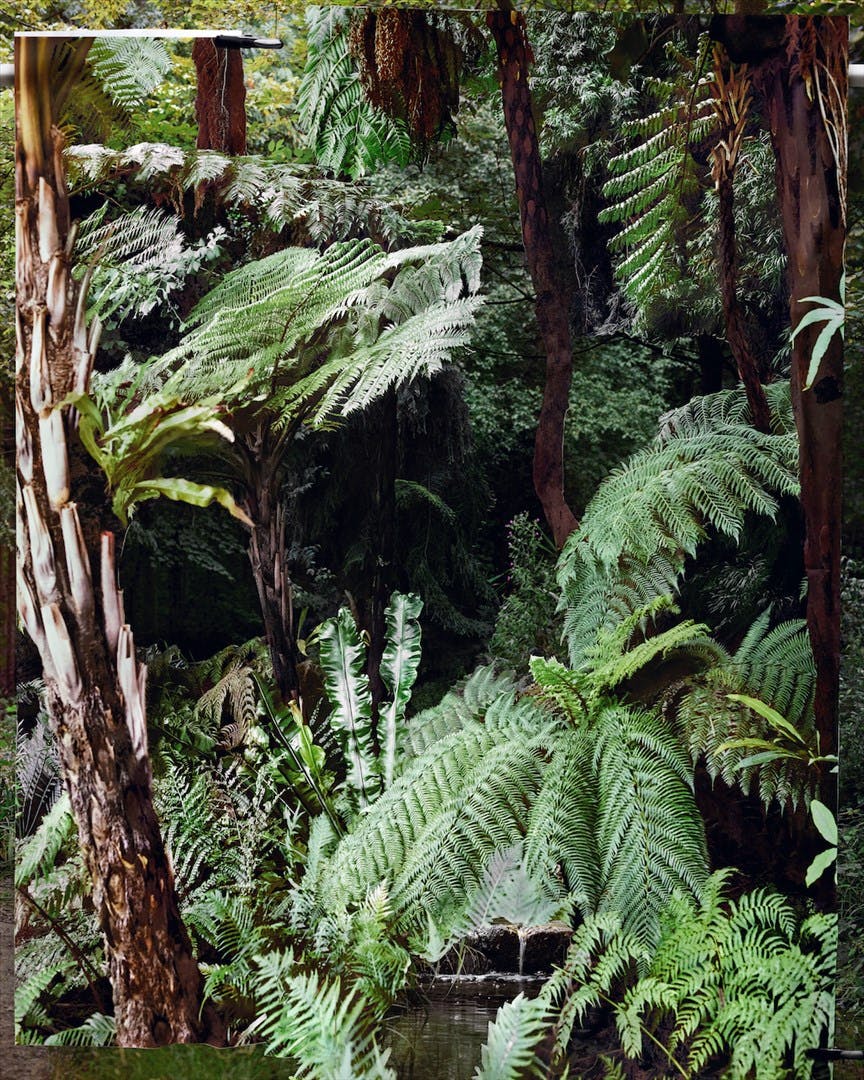
Noémie Goudal
On the heels of her acclaimed solo show at Edel Assanti in London earlier this year, Noémie Goudal is exhibiting a monumental example from her long-running project, Post Atlantica. This body of work reflects the Paris-based photographer’s ongoing interest in paleoclimatology, the study of climate history, as well as geology and anthropology. A result of years of rigorous research, Tropiques III renders the illusion of a closely-entwined jungle disrupted by flattened and collaged glitches that challenge our ecological and visual perception.

Sarah Jones
Primarily known for her widely-exhibited narrative photography, which landed her representation by esteemed gallerists Anton Kern and Maureen Paley, Sarah Jones’s foray into sculpture is one of the Summer Exhibition’s most impressive surprises. Post Climate Stripes, her five-foot-tall pillar of painted wood and metal, reference the climatologist Ed Hawkins’s stark visualization of global warming that represents the progressive heating of Earth in a series of red and blue bars denoting a year’s temperature relative to the average of the period. The charred black top of Jones’s sculpture is an omen of what’s to come.
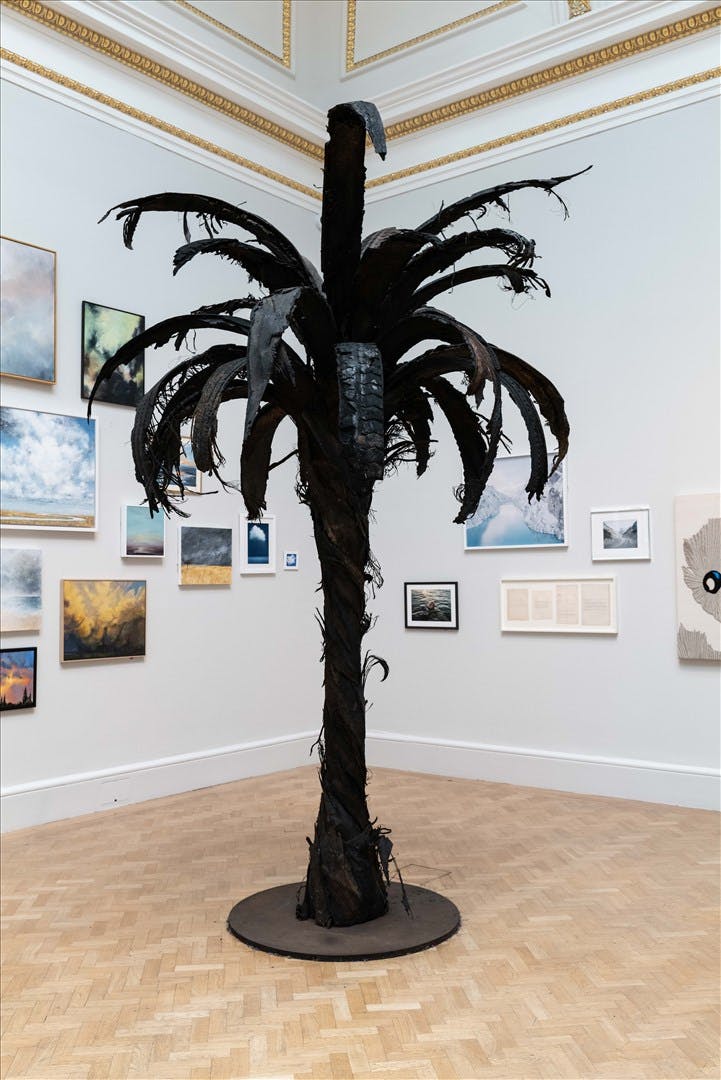
Douglas White
Blown-out tires come alive in one of Douglas White’s Black Palms, which transforms discarded highway material into a nearly 15-foot-tall scorched tree. Conceived during a residency in the Belizean rainforest, the work evokes the practice of burning diseased trees and the surreal experience of encountering these blackened ghosts within the lush Central American tropics. The genesis of the series was a two-week project clearing the roads of tires, which reminded White of the colonial export of exotic plants to Europe as well as the development of the extractive rubber industry. Oscillating between destruction and renewal, Black Palm visualizes a circular economy where waste is reimagined as a new resource.
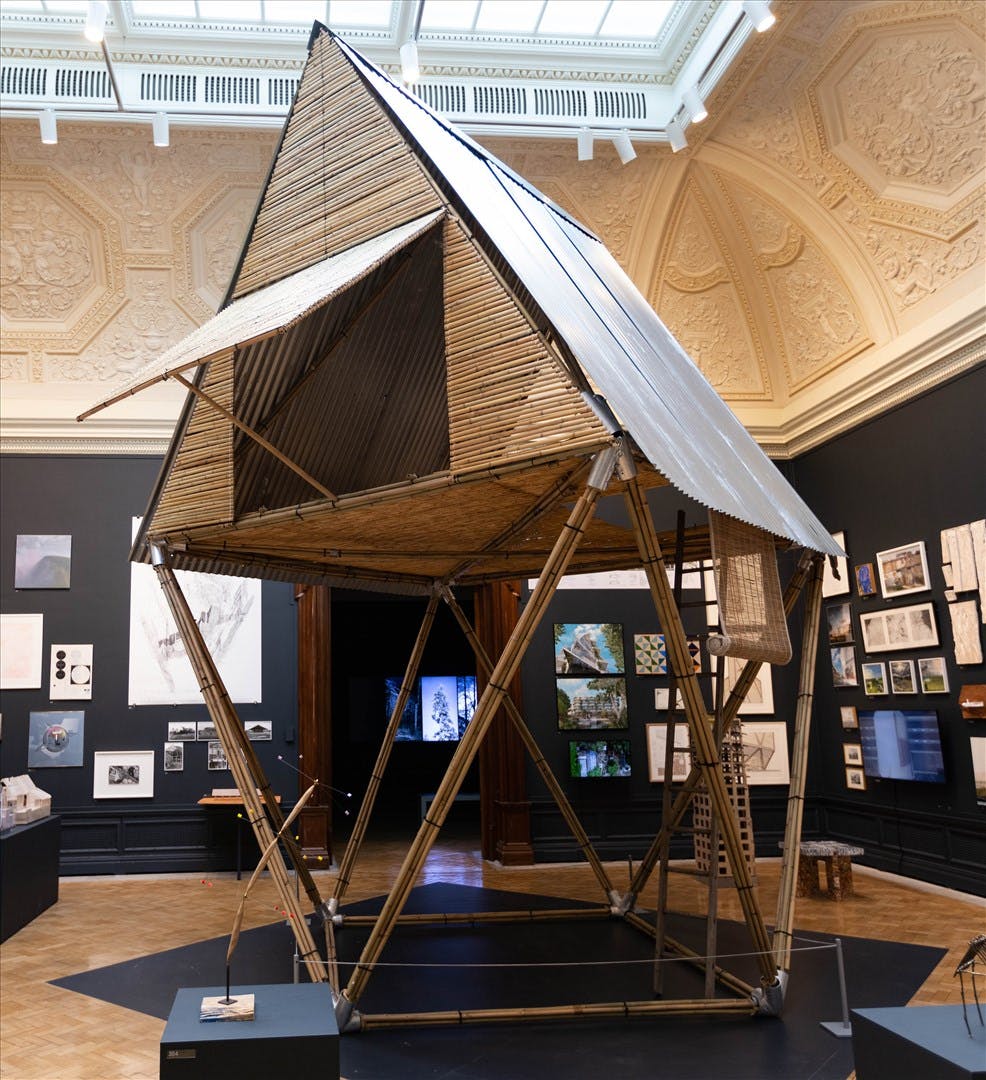
Marina Tabassum
Towering over one of the galleries is a construction of the modular mobile house that Marina Tabassum conceived for the residents of the Bengal Delta to combat the monsoons and extreme weather that have become the norm there. Devised to be built by the residents themselves, the straightforward design uses easily obtainable and low-cost supplies such as bamboo and metal joints, helping her become the first architect from the Global South to win the prestigious Soane Medal last year. The shelter’s ingenious elevated sleeping platform has already rehoused Bangladeshi families and is a testament to how architecture can reclaim local materials and provide innovative options for refugees of the climate crisis.
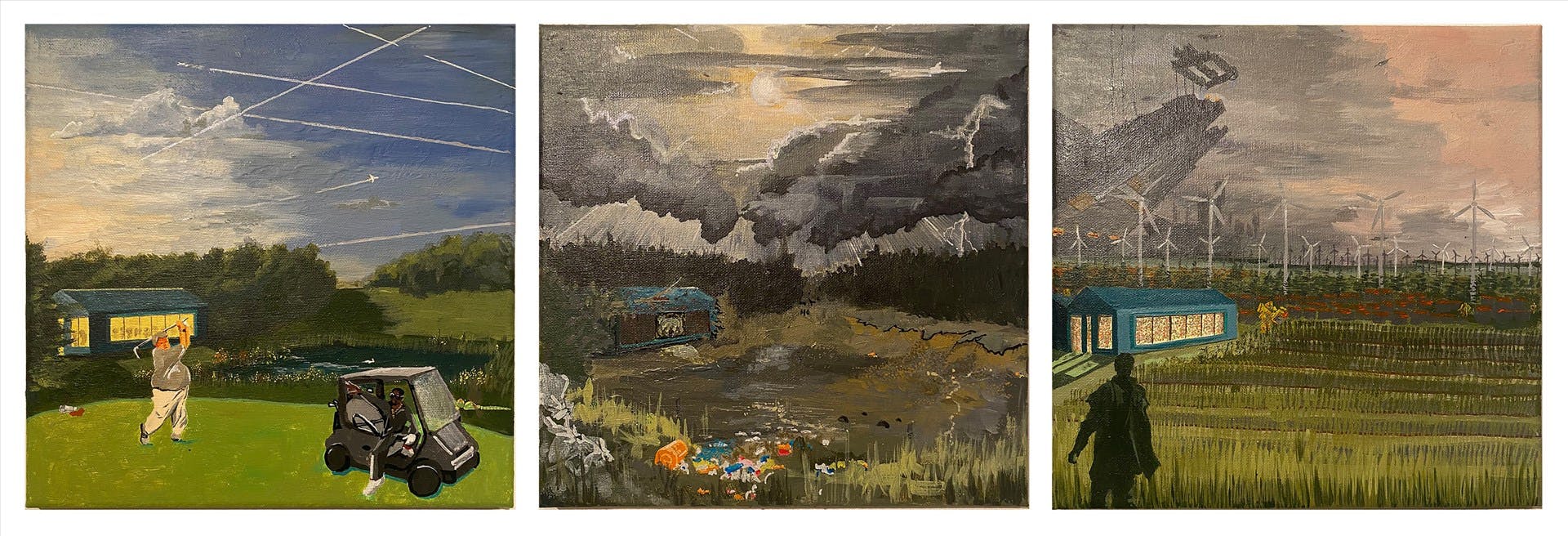
Assorted Skills & Talents*
Assorted Skills & Talents*, a London collective of architects, designers, and other creatives, is represented by a satirical triptych that explores one of their current projects, a Manchester golf club, within the context of ecological disaster. A clever play on Thomas Cole’s The Course of Empire series, the paintings depict a Donald Trump-esque figure swinging a golf club before an excessively manicured vista which descends into a dystopian, ultra-polluted landscape. In a final note of optimism, it is reborn into a field of rice with a greenhouse and turbines generating renewable energy.
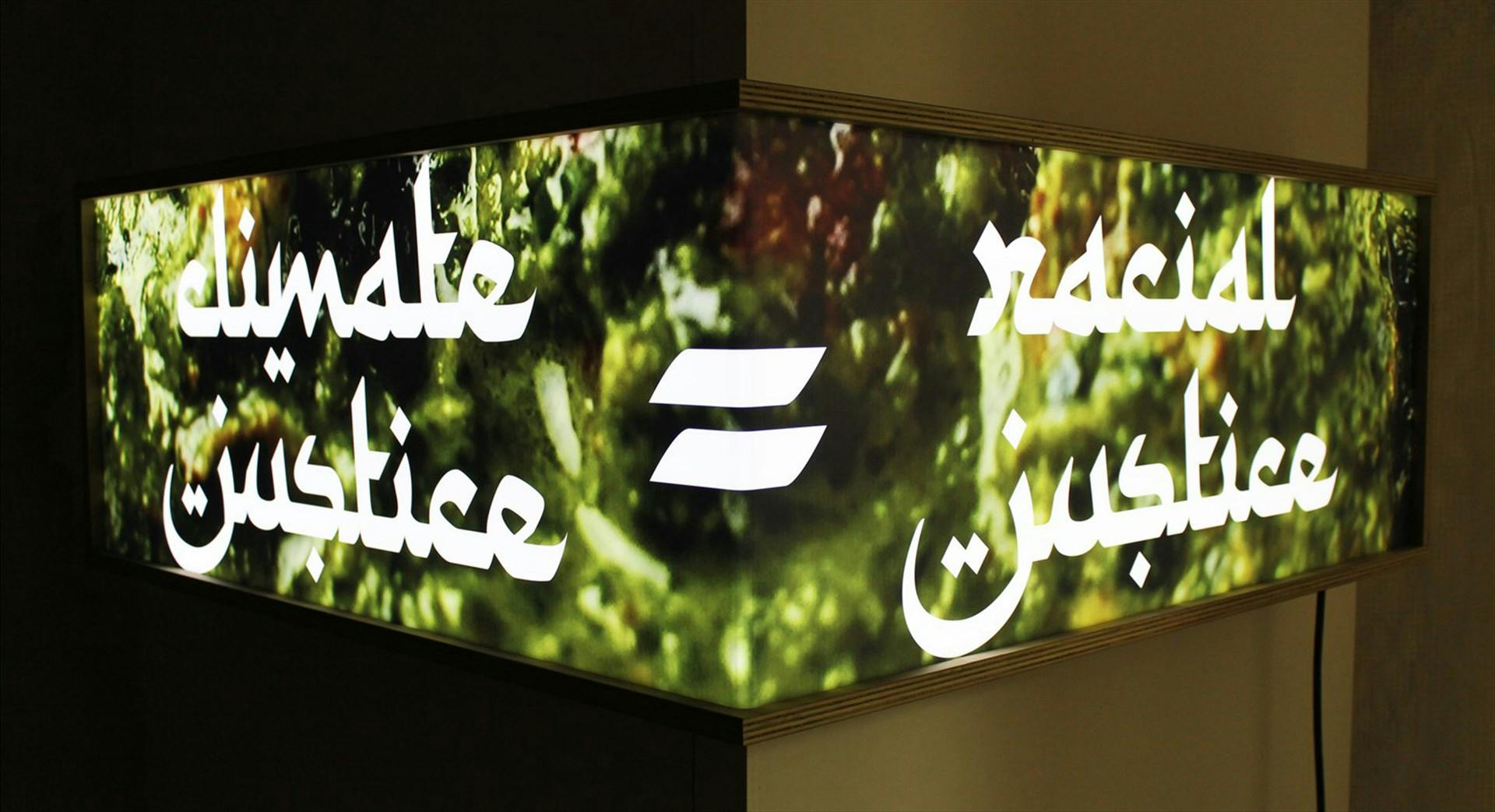
Faisal Hussain
Birmingham-based artist Faisal Hussain is known for his LED sculptures and installations that highlight the prejudice Muslims navigate in the U.K. and abroad. Installed near the top of the first gallery, Climate Justice = Racial Justice serves as a reminder that communities of color—especially those in the Global South—are already bearing the brunt of climate breakdown. His signature co-option of takeout and advertising imagery explores the subconscious influence that media has on the everyday victimization of Muslims and the all-too-often absence of race from climate crisis reporting.
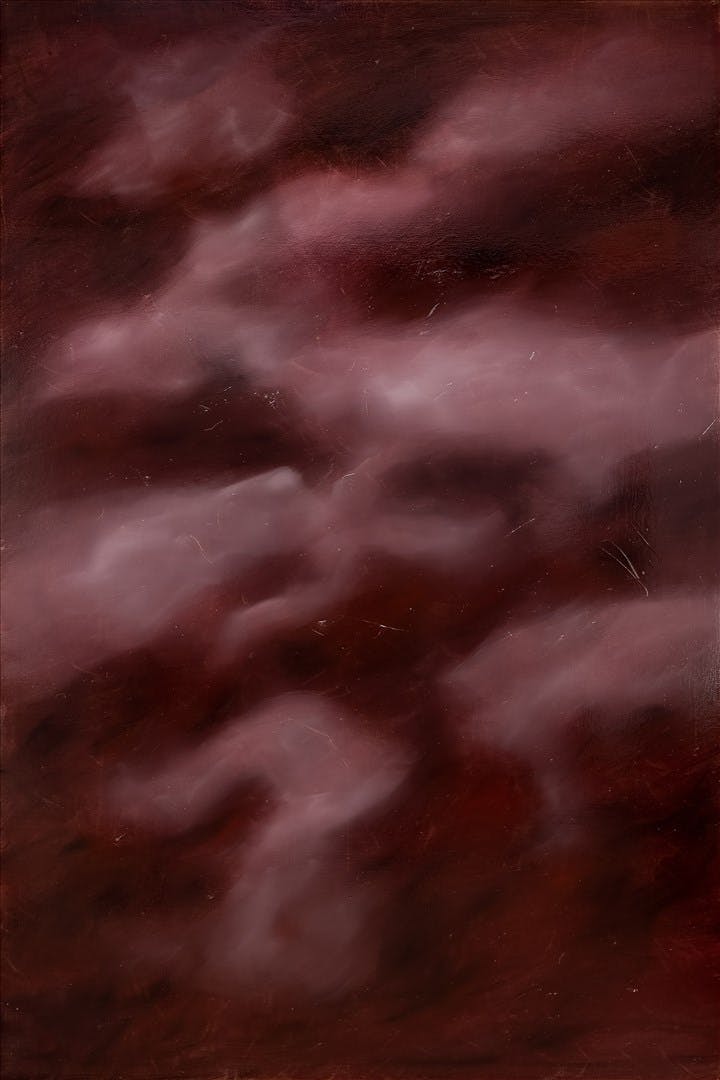
Min Woo Nam
Currently a Masters student at the Royal College of Art, Min Woo Nam’s large-scale oil painting is one of the Summer Exhibition’s finest debuts. Untitled, a large-scale abstracted representation of polluted clouds, draws an equivalence between blood-red bodily cruelty and environmental violence. Having previously exhibited in Seoul and Tokyo, the Korean artist is a promising young voice breathing new life into a medium that in recent years has been dominated by figuration.
Testudo is always looking for more voices to write with us about the art world. If you’d like to pitch an article, please see our pitch guide for more information!